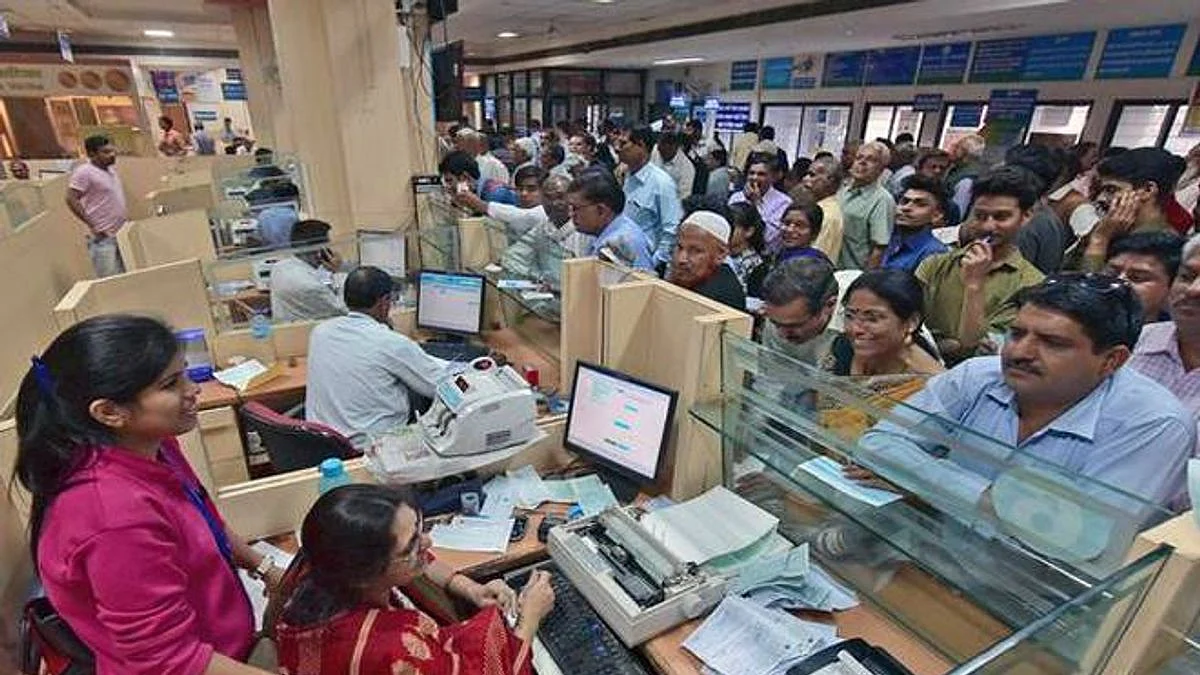The alarming state of Public Sector Banks-Part 3
During the last 5 years, at least 11 weak Public Sector Banks’ profitability, solvency and adequacy ratios have deteriorated significantly.

Bank of India
Bank of India (BoI) was founded in 1906 by a group of eminent businessmen from Mumbai.The Bank was under private ownership and control till July 1969 when it was nationalised along with 13 other banks.
BoI is the fifth largest public sector bank in India. BoI was placed under RBI's PCA framework in 2017, but the bank was lifted from the PCA framework in January 2019. Bank of India is not in the merger list and will continue to operate independently.
Loans and advances grew moderately at 1.6% YoY in Q1 of FY20 (June'19 quarter) for the bank. Growth in the loan book remained flat at 1.6% YoY in Q1 of FY20, with retail loans up 15.9% YoY. Deposits also remained weak and witnessed de-growth of 0.5% YoY in the June quarter mainly driven by reduction in bulk deposits. In June and Sept'19 quarters, BoI posted a small net profits of Rs 243 crore and Rs 266 crore respectively. Though there is an improvement in the performance of BoI in the last two quarters of this financial year, it is only a muted recovery in the performance.
Gross NPA/ Net NPA ratio stood at 16.5%/5.8% in Q1 of FY20. The company’s Gross NPA reached Rs 62,068 Crore and Gross NPA ratio deteriorated slightly in Q1 of FY20 to 16.5% (+66bps QoQ). Government of India has infused Rs 10,086 crore capital in Bank of India during last year. As a result, BoI's capital adequacy stands at a comfortable 14.19% at the end of FY'19.
BoI incurred heavy losses between FY'16 to FY'19. In these four years, the bank has incurred a total net loss of about Rs 19,200 crore. BoI's credit to deposit ratio has come down from 75% in FY'15 to 65% in FY'19. Its return on assets has declined from 0.27% to (minus) 0.88% during the last five years. Its return on equity has declined from 5.43% to (minus) 13.30% during the last five year period. Its cost to income has increased from 29% in FY'15 to 53% in FY'19.
Compared to other weak public sector banks, BoI has navigated the last five years relatively better.
Union Bank of India
Union Bank of India (Union Bank) was registered on 11 November 1919 in Mumbai and was inaugurated by Mahatma Gandhi. Government of India had nationalised Union Bank in 1969.
Andhra Bank and Corporation Bank would be merged into Union Bank of India. The proposed merger would make Union Bank the fifth largest public sector bank in the country. At present Union Bank of India is the sixth largest public sector bank in India. Union Bank's cost to income ratio has gone up from 28.60% in FY'15 to 45.76% in FY'19. Its return on assets has declined from 0.49% to (minus) 0.59% during the last five years. Its return on equity has declined from 9.73% to (minus) 15.57% in the five year period. Its credit to deposit ratio has declined marginally from 86.65% in FY'15 to 79.27% in FY'19.
Union Bank's capital adequacy ratio has improved marginally from 10.22% in FY'15 to 11.78% in FY'19. Union Bank’s regulatory capital adequacy of 11.78% under Basel III norms as on March 31, 2019 is slightly above the minimum regulatory requirement of CRAR of 10.875%.
Government of India announced to infuse Rs 6,216 crores in the equity shares of Union Bank by way of preferential allotment in this financial year. During the last financial year, Government of India infused Rs 4,112 crore equity in Union Bank, which the bank stated would be utilised to improve its provision coverage ratio (PCR).
Union Bank was making some profits till FY'17. But in FY'18 and FY'19 it reported huge net losses of Rs 5,247 Crore and Rs 2,947 Crore respectively, mainly on account of increase in provisions. The bank’s asset quality deteriorated with high fresh slippages of 5.1% of standard assets in FY-2019 compared to 8.0% in FY-2018. The gross non-performing assets (GNPAs) and net NPAs (NNPAs) stood at 14.98% and 6.85%, respectively, as on March 31, 2019. The bank’s GNPAs are Rs 48,729 crore and NNPAs are Rs 20,332 crore as on March 31, 2019. In addition to this, Union Bank has sizeable Special Mention Account-2 (SMA-2) exposures at 3% of the standard advances as on March 31, 2019.
Union Bank is recording a muted growth in loans and deposits of about 2 to 3% during the last two years. Unless there is a substantial improvement in the growth of business and also improvement in the asset quality, the bank will continue to burn capital.
(The writer is a retired corporate professional and a freelance writer)
Follow us on: Facebook, Twitter, Google News, Instagram
Join our official telegram channel (@nationalherald) and stay updated with the latest headlines
